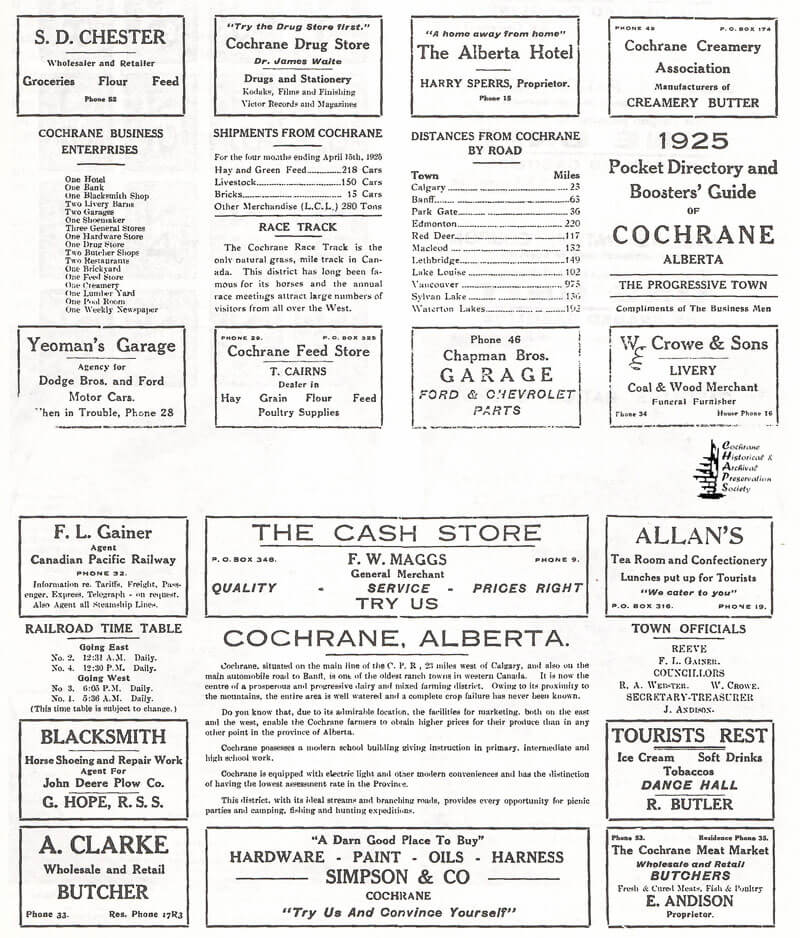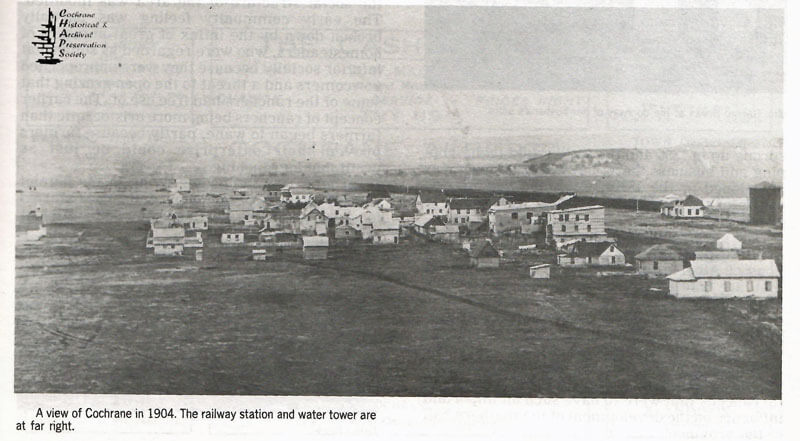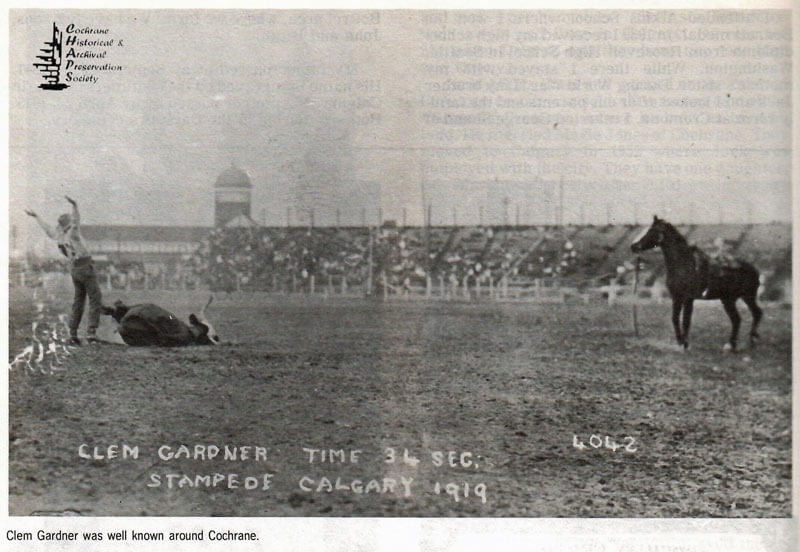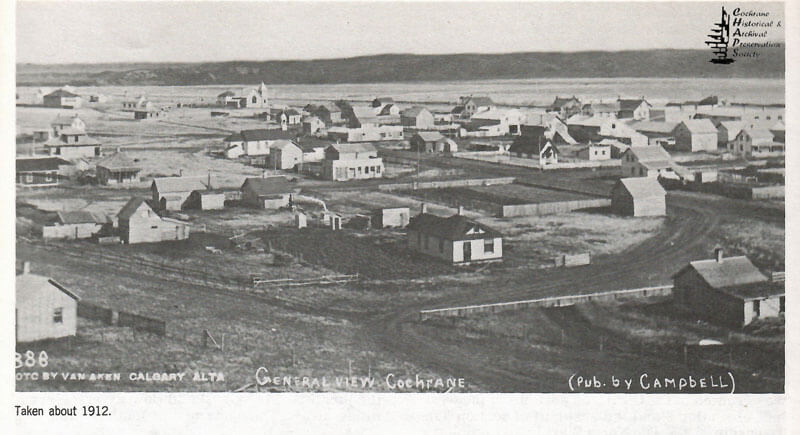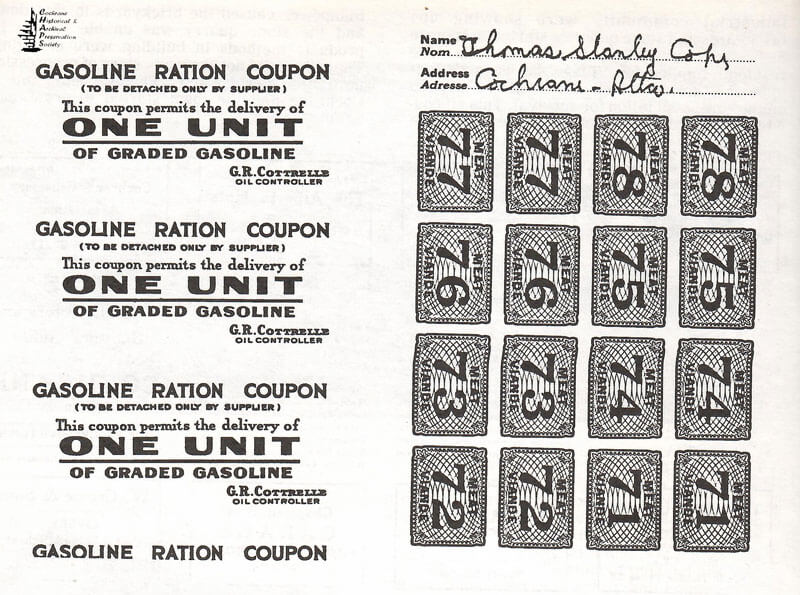by Marjorie Spicer
Cochrane came into being with the building of the Canadian Pacific Railway. Its name was given by the C.P.R. in honour of Senator M. H. Cochrane, who established the first large leasehold cattle ranch in southern Alberta, then the Northwest Territories. The C.P.R. came west to Cochrane in the early 1880s. A townsite was granted to the C.P.R. on portions of the west half of section 2 and the east half of section 3 in Township 26-4-5. The NorthWest Land Company, a subsidiary of the C.P.R., parcelled the site into lots.
The townsite has a mixture of advantages and disadvantages that have become manifest at different times in the history of the town.
The one advantage that the town has, and which will always remain, is the beauty of the location. The town lies at the foot of Big Hill, which rises some 600 feet behind it. The Bow Valley stretching out to the south is some three miles wide at this point and the river bed lies along the southern edge of the valley. To the east, the Big Hill, which normally runs east and west parallel to the river, has a sharp projection to the south that marks the eastern boundary of this wide valley. Cochrane lies in the angle made by these two hills. To the west, the valley tends to narrow until it is little wider than the river bed at the junction of the Ghost and Bow Rivers, eleven miles away. The view of the foothills and the Rockies from the town is superb.
The second and more practical advantage is Cochrane’s situation in the heart of a prosperous mixed farming area. In the early years of its history, this advantage was not apparent. The town was located within the boundaries of the Cochrane Ranche, later the British American Ranche and rural settlement took place some distance away. When the Ranche gave up the leasehold in the late 1880s, settlers were able to take up land nearer the townsite. Mitford had
sprung up in 1886 and the settlers did their shopping and business there, but when the town was abandoned in the 1890s, Cochrane became the centre of the rural area and the town began to grow.
The history of the Cochrane area, although in many respects similar to that of most other sections of Alberta,
displays some characteristics that are unusual. Insofar as the Morleyville settlement was a part of this district for a time, the region around Cochrane has been distinguished from others in southern Alberta by the fact that the first nucleus of the settlement was a mission among the Indians. Then, too, Cochrane was the site of the first of the great company cattle ranches that were to have such an important influence on the development of the southern half of the province.
The history of the Cochrane area also presents an interesting example of the influence of geographical position on the development of local society. To begin with, there were the hardy pioneers, travelling with teams of horses and oxen into an isolated section of the land and laying the foundation of a tightly knit community. The railway followed and established a much closer link with the rest of Canada both east and west. It brought new settlers, with the result that the social structure of the area was modified. The early community feeling was partially broken down by the influx of great numbers of homesteaders, who were regarded as somewhat inferior socially because they were unpropertied newcomers and a threat to the open grazing that some of the ranchers had free use of. The earlier concept of ranchers being more aristocratic than farmers began to wane, partly because farmers proved their enterprise could be just as profitable as ranching.
Around 1898 the people living in the hamlet showed signs of progression. Industries started to spring up and by 1900 signs of self-sufficient industrial communities were showing up; brickyards and stone quarries started to operate as well as lumberyards and sawmills. The residents applied for Village status in 1903. It appeared that the Village did not have to depend on the rural population for survival. This all ended when World War I broke out. The scarcity of manpower caused the brickyards to shut down and the stone quarry was unable to sell its product; methods in the building were changing. The village did not show any signs of progression until after World War II. The oil boom came to Cochrane and the town started to grow once again.
